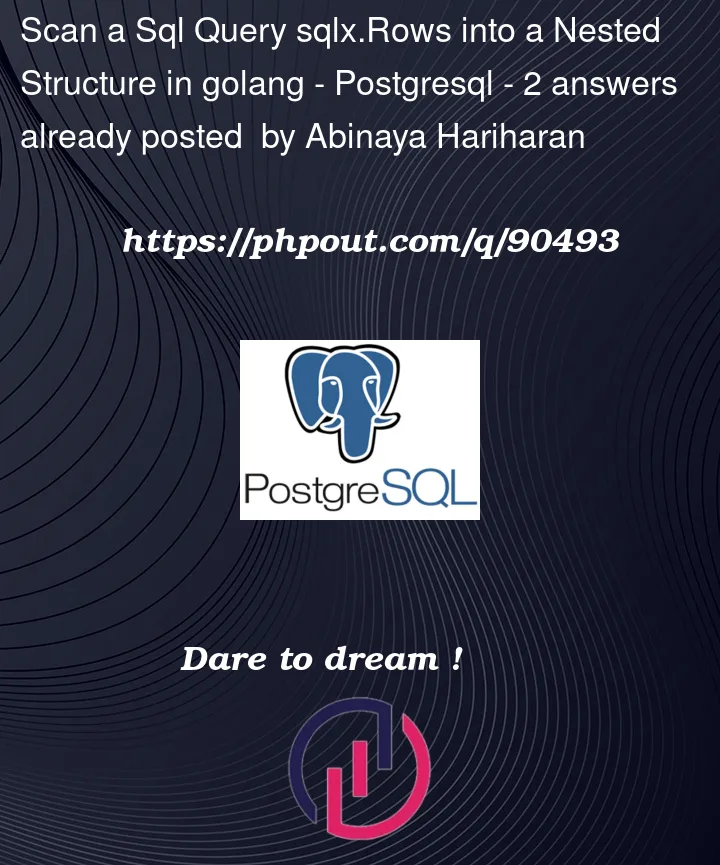I have three following tables:
create table A (
a_id varchar(256) not null unique,
a_name varchar(256)
);
create table B (
b_id varchar(256) not null,
b_a_id varchar(256) not null,
b_name varchar(256),
FOREIGN KEY (b_a_id) REFERENCES a (a_id)
);
create table C (
c_id varchar(256) not null,
c_a_id varchar(256) not null,
c_name varchar(256),
FOREIGN KEY (c_a_id) REFERENCES a (a_id)
);
insert into A(a_id, a_name) values('1234', 'a_name_1');
insert into B(b_id, b_a_id, b_name) values('B1','1234', 'b_name_1');
insert into B(b_id, b_a_id, b_name) values('B2','1234', 'b_name_2');
insert into C(c_id, c_a_id, c_name) values('C1','1234', 'c_name_1');
insert into C(c_id, c_a_id, c_name) values('C2','1234', 'c_name_2');
insert into C(c_id, c_a_id, c_name) values('C3','1234', 'c_name_3');
I have the following Structs in golang:
type A struct {
a_id string `db:"a_id"`
a_name string `db:"a_name"`
b *B `db:"b"`
c *C `db:"c"`
}
type B struct {
b_id string `db:"b_id"`
b_name string `db:"b_name"`
b_a_id string `db:"b_a_id"`
}
type C struct {
c_id string `db:"c_id"`
c_name string `db:"c_name"`
c_a_id string `db:"c_a_id"`
}
I want to scan the rows I get from executing the join query:
SELECT * from A INNER JOIN B ON a_id=b_a_id inner join C on c_a_id=a_id;
Into Struct A using rows.StructScan() in Golang but I am not able to do that. How Do I scan
a join query result into a nested struct and I don’t want to individually scan each column as there are a lot of columns as a result of the join query going forward.




2
Answers
After some investigation, I came up with a solution that should work also for you. First, let me present the working code, and then I’ll explain the relevant parts:
Structs definition
Here, I fixed the structs’ definition by embedding
BandCinto theAstruct. Furthermore, I also fixed the name as long as they didn’t collide with the others (e.g. it’s completely safe to have theIdfield in all of the three structs).Fetching data
The other relevant part is fetching the data from Postgres. Here you’ve to use the
Queryxmethod and provide to it the SQL query you’ve correctly written.However, you should use the methods provided by the
database/sqlpackage when dealing with multiple rows (as in our case).NextandErrare self-explanatory so I won’t spend any time over them.StructScanis the method that does the trick. It puts the current query into a loop-scoped variable calledrecordof typeA(which is our parent struct).If you give a try to this code it should work also for you, if not let me know!
Please have a look at this answer Stackoverflow
Using a light weight library Carta can map SQL results to nested structs.